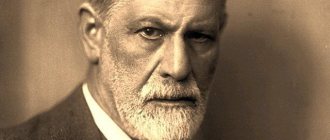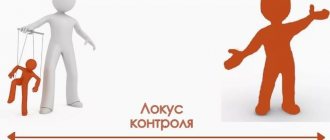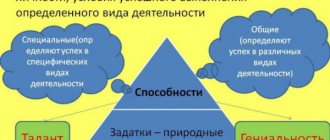Cognitive psychology is the psychology of cognition. Originated in the 60s of the twentieth century. The main idea is that a person transforms all acquired knowledge into templates and uses them as needed. Thanks to this, the answer to the same action is found faster every time. But this is not permanent at all. It is constantly evolving, as a person gains new knowledge again and again. Thus, old schemes and templates are updated and new ones are created.
Concept
Cognitive psychology is understood as a branch of psychology that studies the cognitive processes that occur in the mind of an individual.
Its essence lies in the study of man as a kind of computer , the basis of which is thinking and reason.
It perceives various signals coming from the outside world, perceives and converts them into information, processes, analyzes and organizes it.
The subject of cognitive psychology is the study of such elements as imagination, consciousness, attention, memory, sensation, as well as other thought processes.
Cognitive approach in psychology: knowledge of the world, the nature of actions
The basis of cognitive cognition begins to be created in childhood. First of all, it is of a sensory and motor nature - no objects can be included in mental activity without passing through feelings or motor activity. This concept was expressed by Bruner back in 1966.
Articles on the topic
- Neurosis of fear - how it subjugates a person and poisons his life 11/30/2021
- Unreasonable fear: how to get rid of the problem 11/21/2021
- Crisis psychotherapy: real help for people on the edge 11/15/2021
- Suggestive methods of psychotherapy: the most effective help 11/13/2021
In addition to this method, there is also an iconic perception of the world. In this case, various images of previously perceived objects are stored in memory. Ideas about the world are realized through mental images. And closer to adolescence, an addition occurs. Objects begin to be reflected in the form of concepts, the use of speech gradually replaces the language of images.
Jerome Bruner noted that language is a critical part of the development of cognitive processes.
In psychology, the cognitive approach is based on personality theory, when each action has several components:
- The action itself.
- Thoughts.
- The feelings a person experiences when performing an action.
At the same time, people are constantly in a world of information that needs to be correctly understood, analyzed, evaluated and used. It is also necessary to take into account the subjective interpretation of situations. Therefore, people may see different events differently and take different actions, experiencing completely different emotions and feelings.
In a real situation, a person does not have the opportunity to comprehensively analyze the event, a choice is made, and an action occurs. Behaviorists conclude their analysis of behavior at this point, missing the fact that the cognitive and emotional part of the action is not yet over. Because the action itself is the information. After reacting to it, a person begins to subjectively analyze his behavior. Determines the degree of success, and then corrects behavior and draws conclusions for the future.
Misbehavior can be caused by irrational thoughts that are generated by an “activating situation.” According to the research of psychologist Ellis, in this case it is necessary to analyze not only the action, but also the situation, as well as the conclusions drawn by the person after it.
US psychologist A. Beck described “automatic thoughts.” They are involuntary and unconscious, but they are the basis of the basic premises. When they turn out to be dysfunctional, a person may experience various mental illnesses.
History of origin
This trend originated not so long ago, in the middle of the 20th century. Researchers became interested in an individual's cognitive abilities and how they functioned.
Perception has been identified as a fundamental act of the human psyche. Scientists conducted various experiments to identify the boundaries of the abilities of the mind, attention, and memory.
The founders of cognitive psychology are psychologists F. Heider and L. Festinger.
But the further development of the direction was helped by a meeting held at the Massachusetts Institute of Technology in 1956.
It addressed issues of memory functioning and language formation. , the Center for Cognitive Psychology was created , which studied the processes of thinking and cognition.
What is cognitive psychology, where did it come from and where is it going? Find out from the video:
How parents can support cognitive development:
Cognitive development theory uses a metaphor from the construction industry: scaffolding, a temporary structure around a growing building to aid its construction.
In cognitive development theory, the scaffold provides children with a structure to master a skill, after which it becomes redundant. In this context, we are talking about supporting children in the zone of proximal development: setting goals, regulating their actions and suppressing unwanted reactions, organizing their actions and choosing strategies. This can be as simple as a series of prompts that are appropriate for the child's developmental level.
Recently, many researchers have been studying scaffolding and its effects on cognitive development when it is applied in different ways. Cognitive development progresses when scaffolding is applied well and continually adjusted to the child's progress.
Basic principles and methods
The main position of cognitive psychology can be identified as a protest against the ideas of behaviorism , the statement that human behavior comes from the individual’s mental abilities.
The main concepts of this direction are the processes of cognitivism, which include imagination, memory, and thinking. They form certain conceptual schemes with the help of which behavior is built.
The main method of cognitive psychology is the replacement of a personal construct.
In other words, it is a comparative analysis of how different individuals perceive information coming from the external environment and subsequently interpret it. This method consists of the following steps:
- Introductory stage: the individual receives certain tools (for example, a diary), thanks to which it becomes possible to identify erroneous judgments and their causes.
- Empirical stage , when an individual, with the help of a psychotherapist, works through techniques for the correct correlation of various phenomena. That is, arguments for and against are formulated, the advantages and disadvantages of behavioral models are considered.
- Pragmatic stage , the result of which is the individual’s awareness of his own response actions.
When can cognitive psychotherapy help?
Cognitive psychotherapy is used in the correction of most mental and psychoemotional disorders. But most often this type of therapy is used to treat depression. A depressed person experiences an exaggerated sense of loss, which may be real or imaginary.
Depression is characterized by the presence of negative thoughts of several directions. First of all, the patient develops a negative image of himself; he considers himself a loser, an inferior person. At the same time, they are given a negative assessment of the world around them and passing events, as well as their own future. Experts call this the cognitive triad of depression. To overcome this psycho-emotional disorder, it is necessary to work in each of these directions, replacing dysfunctional thoughts with rational thinking.
In addition to treating unipolar depression and increased anxiety, this type of therapy is also used to eliminate obsessive-compulsive disorder, various phobias, eating disorders, migraines, anxiety and anger attacks, and other personality and behavioral disorders.
Cognitive methods can be part of complex therapy in the treatment of schizophrenia and bipolar affective disorder. The combination of psychotherapy with medication can eliminate hallucinations in patients with schizophrenia and mitigate other symptoms of this pathology. Researchers have proven its effectiveness in the correction of many somatic diseases.
During therapy, the therapist works to solve the problem; he does not change the patient's personality characteristics or shortcomings. From the very beginning, the patient and therapist must come to some kind of agreement, outline the range of problems on which they have to work. It is possible to eliminate the manifestations of the above-mentioned disorders with the help of experimental testing of disaptive thoughts.
What ideas does he explore and consider?
As noted earlier, various cognitive processes are the objects of study in cognitive psychology. She also considers the emotional sphere of personality, developmental psychology and pattern recognition.
The main idea is to study the cognitive processes of the human psyche by analogy with the functions of a computing device.
In other words, the computer performs various operations to receive, process, store and output information.
Adherents of cognitivism believe that the human mind works according to a similar concept and the cognitive functions of the psyche work according to a similar pattern.
Another idea is the gradual processing of information in the human psyche. That is, all stimuli coming from outside pass through a certain chain of transformations.
There is also the idea of the maximum volume of information processing systems. This leads to the main direction of activity of cognitive psychologists, which is to search for natural and most effective methods of working with information that enters the individual’s psyche.
Piaget vs Vygotsky
Psychologists have tried to figure out how Piaget's and Vygotsky's contributions to cognitive development theory work together.
In fact, both emphasized social interaction to such an extent that even leading experts often cannot read the statements of one or the other and be sure whether it was written by Piaget or Vygotsky.
One way to see the difference is through a thought experiment: What would happen to a child's development if there were no adults? For Vygotsky, there would be no development because children cannot move forward from their zone of proximal development without more skilled help. According to Piaget, development can take place, although not in the way that should be recommended. Two children interacting with each other can learn more than one.
Famous representatives
The emergence of this direction was facilitated by the activities of W. Neisser, who outlined its main provisions, and J. Miller, who is the founder of the Center for Cognitive Psychology.
Also among the most famous representatives of cognitive psychology are the following: J. Sperling, J. Bruner, R. Solso, S. Herbert, K. Pribram, A. Newell .
They made a significant contribution to the study of the laws of cognitive processes and cognition in general.
Executive function: a core concept in cognitive development theory
Simply put, executive function is a set of mental skills that help a person gain control over their actions and thoughts. Scientists have identified four components:
- Working memory is the ability to retain information and recall it while performing a task.
- Inhibitory control is the suppression of initial impulses in favor of a more rational action.
- Flexibility of attention - transition from one way of solving a problem to another.
- Planning - using all of the above skills, creating a strategy to complete tasks.
These skills develop in a certain sequence. Working memory typically develops in early childhood and improves during preschool and beyond. Inhibitory control and flexibility of attention develop in preschool age. Planning skills develop during childhood and adolescence.
Like other cognitive development skills, executive function occurs through social interactions, particularly parental scaffolding, which helps children function effectively in their zone of proximal development. When children are specifically taught executive functioning skills at a developmentally appropriate level, their skills improve.
Poverty is a key factor hindering the development of executive function skills. But its negative effects can be mitigated if the child has more social interaction, such as in kindergarten. Unfortunately, poverty reduces parental resources and is often associated with worsening relationships and more chaos.
Models of attention
Problems of attention are often studied in the field of cognitive psychology.
It was representatives of this industry who developed the most interesting models of attention . The main ones include:
- selective attention patterns
- attention as a perceptual action,
- attention as mental effort.
Selective
Selective attention models are associated with the names of D. Broadbent, K. Cherry.
The main idea of this theory is that the structure of information processing has a certain bottleneck or filter, a funnel.
The main subject of discussion of selective attention models is to identify the location of this filter (at what stage of information processing) and by what principles information is selected , that is, its selection.
The most popular cognitive psychotherapy techniques
Treatment of mental disorders using cognitive psychotherapy is not just a way to combat a specific disease. This approach to therapy gives the patient a special perspective on everything that happens in his life. Thus, it is possible to prevent the development of relapses and other mental disorders. A person trained in the basics of cognitive psychotherapy is able to systematically monitor his own negative emotions and transform them into rational thoughts. This method is especially effective in combating panic attacks.
All techniques used in cognitive psychotherapy can be divided into two large groups:
- techniques aimed at identifying automatic thoughts of a negative nature. The main way to achieve this goal is to interview the patient, but the therapist can also use role-playing techniques. After the automatic thought is found by the patient, the therapist must check it with behavioral factors, as well as logical analysis. In some cases, the identified beliefs turn out to be a mythologem, but most often such thoughts nevertheless take place in reality, although they are not realized by the patient. The therapist must identify the relationship between the automatic thought and the traumatic situation and pathological emotional reactions;
- techniques that allow you to identify the unreasonableness of an automatic thought and cognitively reconstruct it. A person will be able to abandon a maladaptive thought only if he is completely sure of its “wrongness.” First of all, the validity of such thinking can be verified by its consequences. This technique is called decatastrophizing or “what if.” The patient imagines the consequences of the situation that frightens him, and understands that in fact nothing terrible will happen. You can push a person to check irrational thoughts with real actions. If the patient suffers from depression, believing that he is not capable of anything, then he can be given small tasks. Their successful implementation will restore a person’s faith in his own strength. The psychotherapist can also invite the patient to compare his situation with another case from his practice. By feeling sorry for a patient with similar problems, the patient automatically feels sorry for himself. As a result, the negative attitude towards oneself changes into pity and sympathy. A similar result can be achieved using the catharsis method, when the therapist encourages the patient to speak out and cry. In addition, there are a large number of other methods that allow you to change cognitive attitudes.
Throughout the course of therapy, the patient receives homework. He must track automatic thoughts and record his feelings in a special notebook. A psychotherapist may recommend reading certain literature and listening to recordings of psychotherapy sessions.
Most often, psychotherapy is individual, but group work can also be used. In the latter case, not the relationships between its individual members are examined, but the rationality of their thinking and behavior is assessed.










